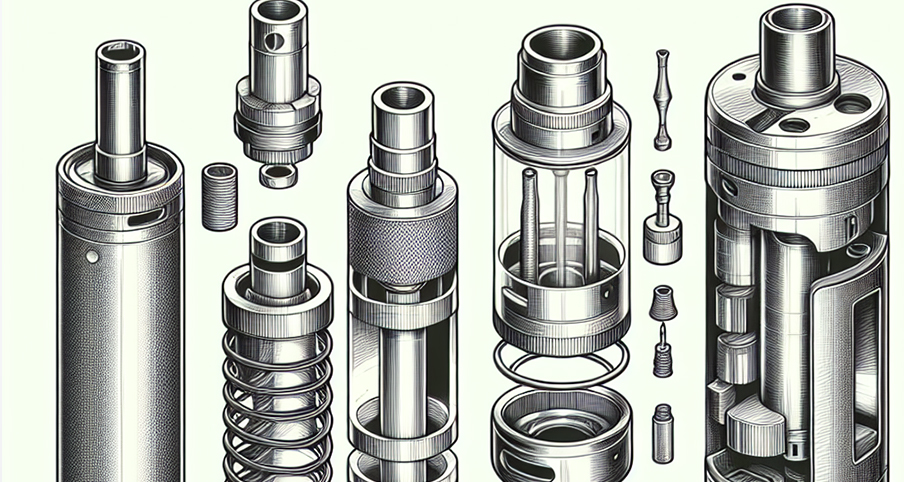Vaping has become a popular alternative to traditional smoking, but many people still wonder: what’s really inside vapes, and how do they work? This article delves into the inner workings of vapes, examining their components, how they function, and the pros and cons of using them.
How Vapes Work
Vapes, also known as e-cigarettes or vaporizers, are devices designed to heat a liquid—commonly called e-liquid or vape juice—into a vapor that users can inhale. The main goal is to provide a nicotine delivery system without the harmful effects of burning tobacco. Here’s a breakdown of how vapes function:

- Battery:
The power source of a vape, typically a rechargeable lithium-ion battery, provides the necessary energy to heat the coil. Batteries vary in capacity and voltage, affecting the device’s performance and longevity.
- Atomizer:
The atomizer is a crucial component where the magic happens. It contains a coil, usually made of metal, that heats up when electricity from the battery flows through it. This heat is what turns the e-liquid into vapor.
- E-liquid Tank/Cartridge:
This part holds the e-liquid, which consists of a mixture of propylene glycol (PG), vegetable glycerin (VG), flavorings, and optionally nicotine. The tank is either refillable or replaceable, depending on the vape’s design.
- Coil:
The coil is a wire wrapped into a spiral shape inside the atomizer. When heated, it vaporizes the e-liquid. The type of coil material and its resistance affect the flavor and amount of vapor produced.
- Wicking Material:
Often made of cotton, this material absorbs the e-liquid and delivers it to the coil. When the coil heats up, the liquid is vaporized, ready for inhalation.
- Mouthpiece:
The part of the vape through which the user inhales the vapor. It’s designed for comfort and ease of use.
Disassembling a Vape
To understand a vape’s inner workings, let’s disassemble it step-by-step:
- Remove the Mouthpiece:
This is usually the top part and can often be unscrewed or popped off.
- Open the Tank:
If it’s a refillable model, you’ll see the e-liquid chamber. For disposable vapes, this might be a sealed cartridge.
- Access the Coil and Atomizer:
The coil is often housed within the atomizer. In some models, you can unscrew it to replace the coil or clean the components.
- Inspect the Battery Compartment:
Batteries are typically housed at the bottom of the device. In many vapes, you can remove the battery for charging or replacement.
Working Principles of Each Component
- Battery:
Provides the power necessary to heat the coil. A larger battery capacity means longer usage times between charges.
- Atomizer and Coil:
Converts electrical energy into heat. The coil’s resistance (measured in ohms) influences the vaping experience, affecting the temperature and vapor production.
- Wicking Material:
Ensures a consistent supply of e-liquid to the coil, preventing dry hits and ensuring a smooth vaporization process.
- E-liquid:
The substance that is vaporized. The balance of PG and VG affects the throat hit and vapor production, while flavorings and nicotine content provide taste and satisfaction.
Pros and Cons of Vaping
Pros
- Reduced Harm:
Vaping is generally considered less harmful than smoking traditional cigarettes since it avoids combustion and the associated harmful chemicals.
- Variety of Flavors:
Offers a wide range of flavors, allowing users to customize their experience.
- Odorless:
Produces less odor than traditional smoking, making it more discreet and socially acceptable.
- Adjustable Nicotine Levels:
Users can choose e-liquids with varying nicotine strengths, aiding in gradual nicotine reduction.
Cons
- Health Uncertainties:
Long-term health effects of vaping are still not fully understood.
- Addiction Potential:
Nicotine in e-liquids can still lead to addiction.
- Device Malfunctions:
Poor-quality devices can lead to leaks or battery issues.
- Youth Appeal:
Flavored e-liquids and marketing can attract younger users, raising concerns about underage vaping.
In conclusion, understanding what’s inside vapes and how they work can help users make informed decisions about their use. While vapes offer a less harmful alternative to smoking, they also come with their own set of challenges and considerations. Users should weigh the pros and cons to determine if vaping is the right choice for them.


